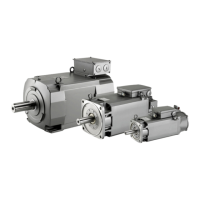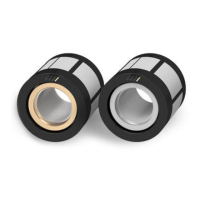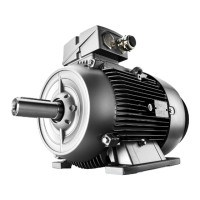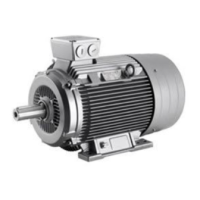4.7.2 Axial force
The axial force acting on the locating bearings comprises the following components:
- Axial force in operation
• Axial forces acting externally on the motor (e.g. gearbox with helical gearing, machining
forces through the tool)
• Axial forces from the coolant pressure of the coolant fed through the rotating union
- Force due to spring loading of the bearing
- Where applicable, force exerted by the rotor weight when the motor is vertically
mounted
This results in a maximum axial force that is a function of the direction.
CAUTION
Axial force due to eective hydraulic diameter of the rotating union
Pay attention to the axial force due to the eective hydraulic diameter (area) of the rotating
union.
Force = A x p
• Force = F [N]
• A = area [m²]
• p = coolant pressure [N/m²]
1 bar = 10
5
N/m²
For axial forces in the direction of the motor, the spring-loading of the bearings can be
overcome so that the rotor moves in accordance with the axial bearing play (up to 0.2mm).
The permissible axial force F
AZ
in operation depends on the motor mounting position.
When, for example, helical toothed wheels are used as the drive element, an axial force is
exerted on the motor bearings in addition to the radial force. For axial forces in the direction
of the motor, the spring-loading of the bearing can be overcome. This must be prevented as
otherwise it could reduce the bearing and encoder service life.
The permissible axial force F
AZ
in operation depends on the motor mounting position (see
table "Calculating the permissible axial force").
Mechanical properties
4.7Radial and axial forces
1PH8 SIMOTICS M main motors
Conguration Manual, 12/2022, A5E51895839A 113

